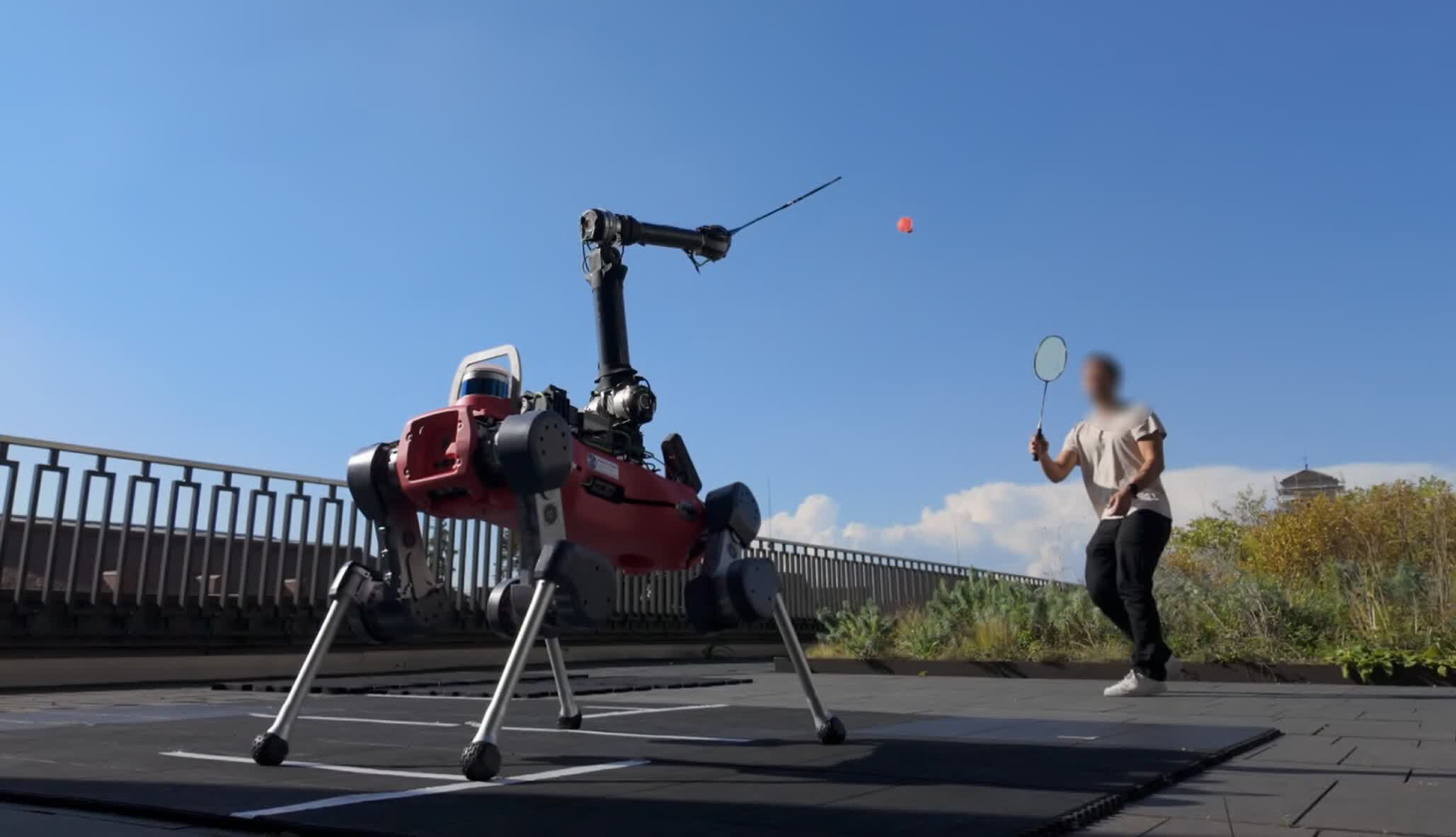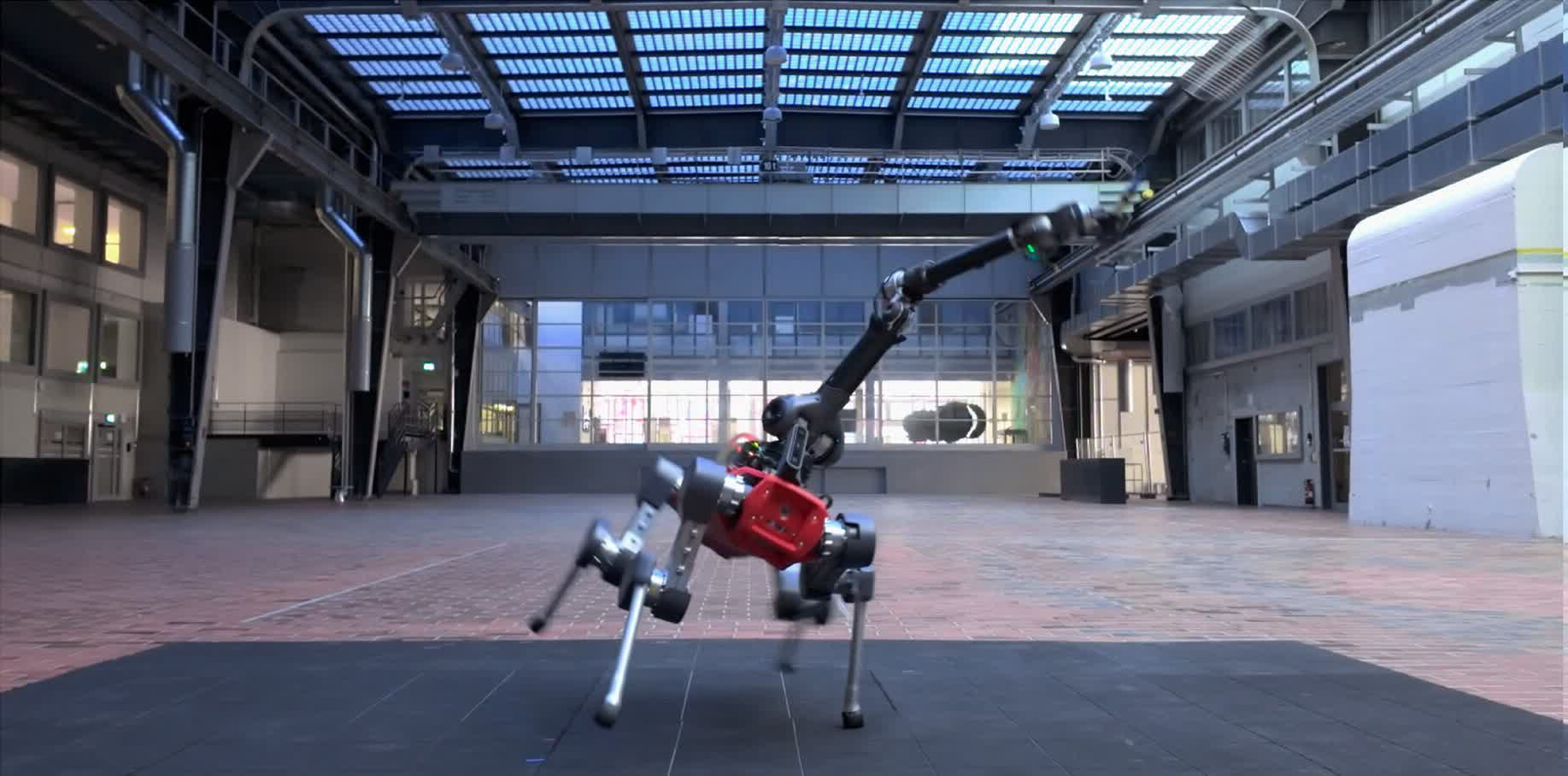Why it matters: Ever since Boston Dynamics first showcased its famous legged robots in 2013, numerous organizations have introduced machines that autonomously perform various professional and recreational activities. The latest research utilizes badminton to develop a robot's agility and coordination, which could help advance training methods and maneuverability.

Scientists at ETH Zürich recently published a study and video (below) explaining how they trained a quadrupedal robot to play badminton. The research could demonstrate the usefulness of a full-body training model that doesn't break activities into individual steps, potentially widening the range of learnable tasks.
A standard ANYmal-D robot was equipped with a DynaArm and taught using a standard reinforcement learning model with minimal software or hardware specialization. Furthermore, the machine learned to track the shuttlecock using only its onboard stereo camera.
The robot learned to navigate the court using Nvidia's Isaac Gym virtual simulator, which took about 7,500 iterations over almost five hours using an RTX 2080 Ti graphics card. Additionally, a noise prediction model helped it track the shuttlecock when it passed out of the camera's limited field of view.
Eventually, it learned to deploy various complex movements to hit the shuttlecock without the researchers needing to teach them individually, such as starting motions, backswings, hits, running, and recovery. It even adjusted its movements based on the shuttlecock's perceived speed, galloping across the court to hit it in time.
The experiment demonstrates the adaptability of the ANYmal-D, which ANYbotics designed to perform inspections, emergency response, and other tasks in various industrial environments. The company's website shows the robot navigating indoor facilities, gravel, staircases, caves, snow, mud, and flooding while operating around the clock. An upcoming model, the ANYmal-X, is certified for more hazardous environments to help conduct inspections involving oil, gas, and chemicals.

Badminton is only the latest leisure activity used to demonstrate a legged robot's adaptability. Boston Dynamics famously showed its original Atlas model dancing and performing gymnastics, and the company's quadrupedal Spot unit demonstrated how robots might one day assist in stage productions.
Meanwhile, Google DeepMind trained a robot arm to play table tennis, Engineered Arts showcased a humanoid robot artist, and the NBA recently deployed robots to assist practicing athletes. Chinese companies also recently deployed robots to compete in a half-marathon and a kickboxing tournament with mixed results.
Researchers teach robot to play badminton using Nvidia RTX machine learning